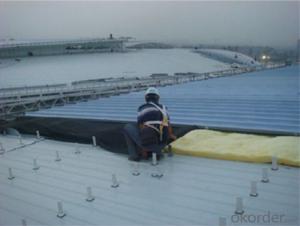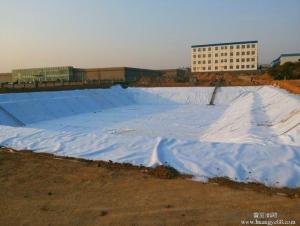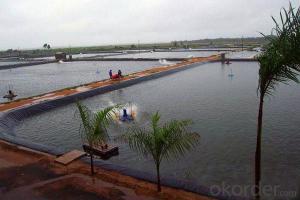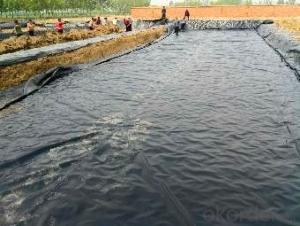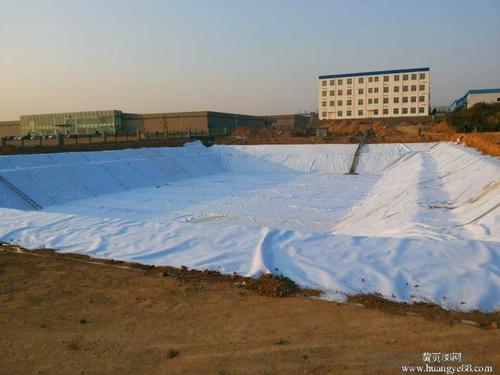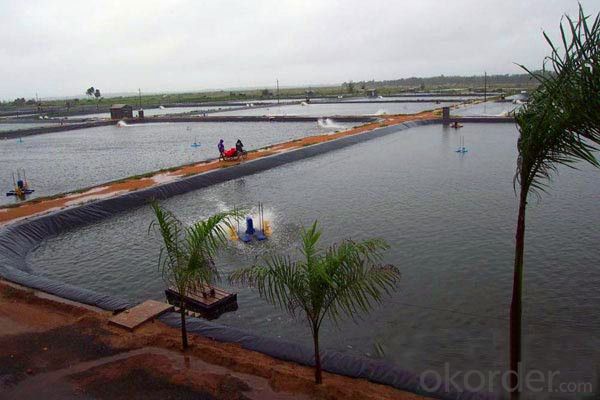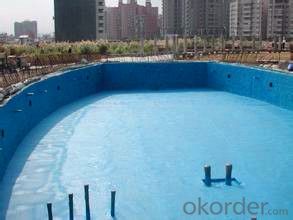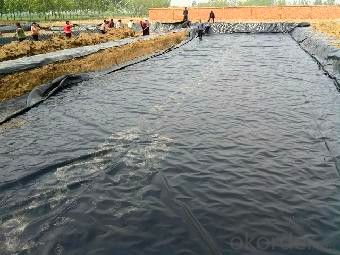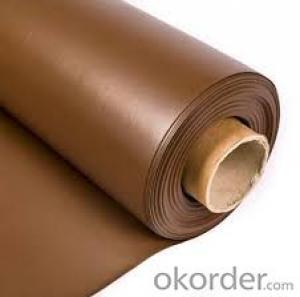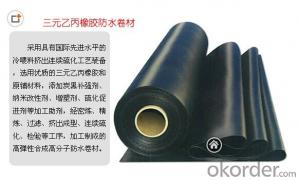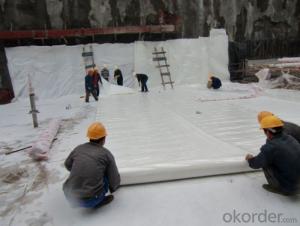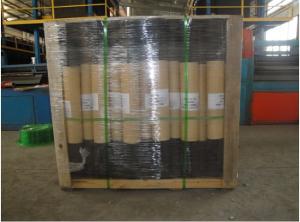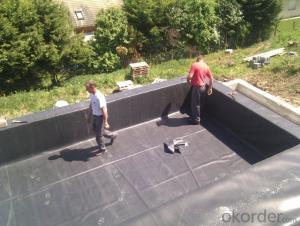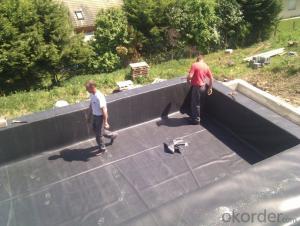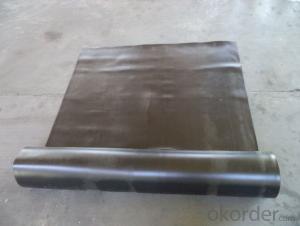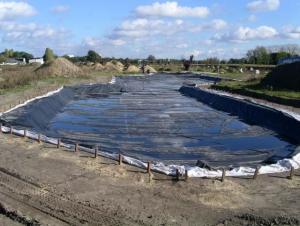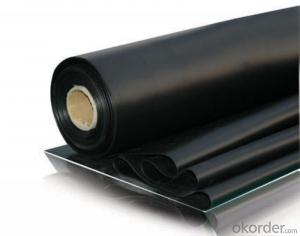Waterfroof EPDM Membrane of Pond Liner Supplier
- Loading Port:
- Qingdao
- Payment Terms:
- TT OR LC
- Min Order Qty:
- 10000 m²
- Supply Capability:
- 5000000 m²/month
OKorder Service Pledge
OKorder Financial Service
You Might Also Like
Description Of Waterfroof EPDM Membrane:
Waterfroof EPDM Membrane is of high elasticity among high polymer waterproof materials and becomes a world-popular waterproofing material. EPDM waterproof membrane is made from ternary ethylene-propylene rubber, which is designed for waterproofing of exposed and non-exposed applications. EPDM waterproof membrane production adopts the world-advanced equipment of cold feeding extrusion and continuous vulcanization technology.
Main Features of Waterfroof EPDM Membrane:
Good mechanical properties, high tear strength, deformation and adaptable, puncture resistance,
anti-aging, anti-ultraviolet-resistant,
Anti oil and salt, pH, anti-corrosion, high temperature-resistant, non-toxic, long service life. water,
drainage, seepage, the good effect of moisture, width, thickness of the full range of specifications
and low cost, simple construction.
Specifications of Waterfroof EPDM Membrane:
EPDM membrane
1.Material:HDPE, LDPE, LLDPE, PVC,EVA
2.Thickness:0.15mm-4.0mm
3.Width:1m-8m
4.Certificate:CE/ISO9001,1400
No. | Item | Test Value | ||||||
0.75mm | 1.0 mm | 1.25 mm | 1.5 mm | 2.0 mm | 2.5 mm | 3.0mm | ||
1 | Minimum Density(g/cm³) | 0.939 | ||||||
2
| Tensile Property | |||||||
Strength at yield,N/mm | 11 | 15 | 18 | 22 | 29 | 37 | 44 | |
Strength at break ,N/mm | 20 | 27 | 33 | 40 | 53 | 67 | 80 | |
Elongation at yield,% | 12 | |||||||
Elongation at break,% | 700 | |||||||
3 | Tear Resistance N | 93 | 125 | 156 | 187 | 249 | 311 | 374 |
4 | Puncture Resistance N | 240 | 320 | 400 | 480 | 640 | 800 | 960 |
5 | Stress Crack Resistance, hrs | 300 | ||||||
6 | Carbon Black Content, % | 2.0-3.0 | ||||||
Carbon Black Dispersion | 1 or 2 | |||||||
7 | Standard OTI Min | 100 | ||||||
High Pressure OTI Min | 400 | |||||||
8 | Impact Cold Crack at -70°C | Pass | ||||||
9 | Water vapor permeability (g.cm/cm2 .s.Pa) | ≤1.0×10-13 | ||||||
10 | Dimensional Stability (%) | ±2 | ||||||
Applications of Waterfroof EPDM Membrane:
1) Environmental protection, sanitation (such as solid waste landfills, sewage treatment plants, power plants Chi-conditioning, industrial, hospital solid waste, etc.) .
2) Water (such as rivers, lakes and reservoirs of the anti-dam, plugging, reinforcement of the canal seepage, the vertical wall of the heart, slope protection, etc.).
3) Municipal Engineering (subway, on the ground floor of the building, planted roof, the roof garden of anti-seepage, sewage pipes lining, etc.).
4) Landscape (man-made lake, river, reservoir, golf courses reservoirs of the substrate, slope protection, green lawn of the waterproof moisture, etc.).
5), Petrochemical (chemical plants, oil refineries, gas storage tanks of the anti-chemical reaction tanks, sedimentation tanks of the lining, etc.).
6), Mining (washing and pool heap leaching, the ash-field, dissolved, precipitation, the yard, the tailings seepage substrates, etc.) .
IMages of Waterfroof EPDM Membrane:
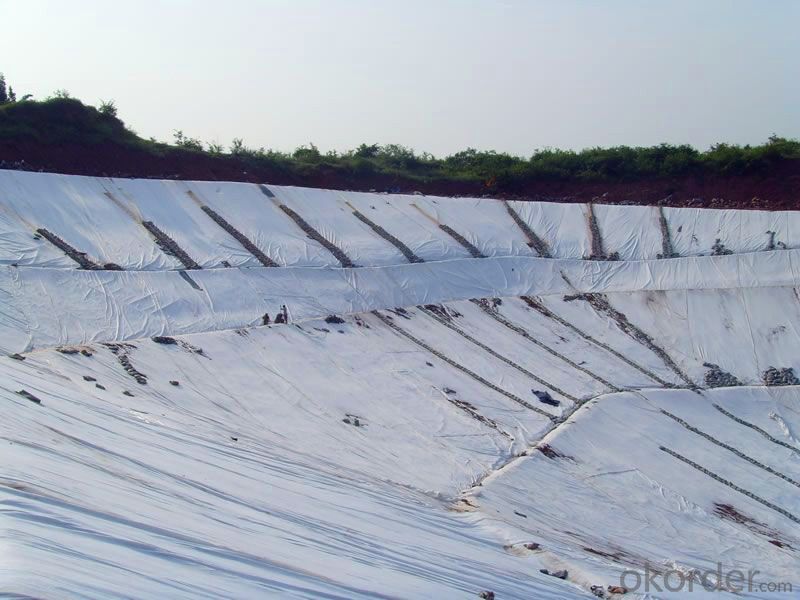
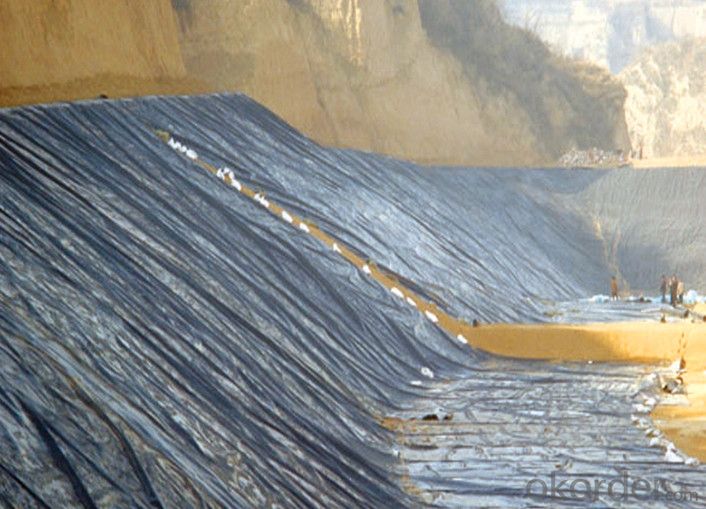
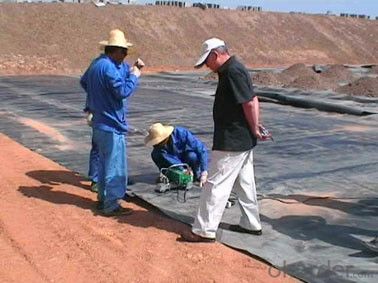
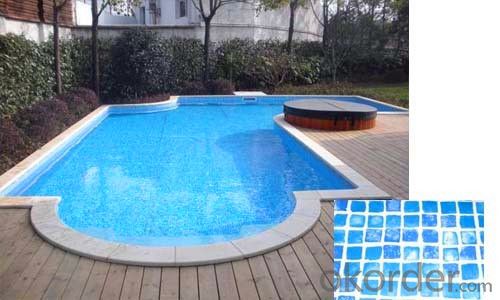
FAQ:
Q1.:What are we supplying?
A1:We are specialized in producing Colorful Asphalt Roof Shingle, SBS/APP modified bitumen waterproof membrane, Self adhesive bitumen waterproof membrane, PVC waterproofing membrane, EPDM rubber roofing membrane, Single Component Polyurethane Waterproof Coating, and Spray Polyurea Waterproof Coating
.
Q2: How Many years experience do we have?
A2:We have exported to more than 20 countries in the last 15 years.
Q3.:Do you provide samples for us?
A3:Yes,We will provide samples for free.Waiting for your your good news.
- Q: Can a waterproofing membrane be used for a basement floor moisture barrier?
- Yes, a waterproofing membrane can be used as a basement floor moisture barrier. A waterproofing membrane is designed to prevent water from seeping through surfaces, making it an effective solution for keeping basements dry and free from moisture issues.
- Q: Can a waterproofing membrane be used in permanent or long-term structures?
- Certainly, permanent or long-term structures can indeed make use of a waterproofing membrane. By creating a protective barrier against water infiltration, waterproofing membranes are perfectly suited for structures requiring extended safeguarding against moisture, such as buildings, bridges, tunnels, and underground constructions. These membranes are typically crafted from resilient materials like modified bitumen, PVC, EPDM, or polyurethane, which boast exceptional resistance to water, UV rays, and other environmental elements. A properly installed waterproofing membrane can significantly prolong the lifespan of a structure by thwarting water damage, mold growth, and structural decay. It is therefore highly advisable to utilize a waterproofing membrane in permanent or long-term structures to ensure their robustness and longevity.
- Q: Are there any specific tools or equipment required for installing a waterproofing membrane?
- Yes, there are specific tools and equipment required for installing a waterproofing membrane. Some common tools include a trowel, utility knife, paint roller, brush, and caulking gun. Additionally, a heat gun or torch may be needed for certain types of membranes that require heat activation. It is important to follow the manufacturer's instructions and recommendations for the specific membrane being installed to ensure proper installation and effectiveness.
- Q: How does a waterproofing membrane handle water pressure from adjacent structures?
- A waterproofing membrane is designed to handle water pressure from adjacent structures by creating a barrier that prevents water from penetrating through it. The membrane is typically installed on the exterior side of the structure, such as the foundation walls, and acts as a protective layer against water infiltration. The membrane itself is usually made of a durable and flexible material, such as rubber, PVC, or bitumen, that is resistant to water and can withstand the pressure exerted by water. It is installed in such a way that it forms a continuous and seamless barrier that covers the entire surface of the structure. When water pressure from adjacent structures, such as soil or groundwater, is exerted on the membrane, it resists the pressure and prevents water from seeping through. This is achieved through the combination of the membrane's material properties and the way it is installed. The waterproofing membrane is typically installed with proper surface preparation, ensuring that the surface is clean, smooth, and free from any debris or sharp objects that could potentially damage the membrane. It is then applied using adhesives, heat fusion, or mechanical fastening techniques to create a secure and watertight seal. In addition to the membrane itself, other components, such as drainage systems and protection boards, may be incorporated into the waterproofing system to further enhance its performance and manage water pressure effectively. These additional components help to divert water away from the structure and relieve any excess water pressure that may build up. Overall, a properly installed and maintained waterproofing membrane is designed to handle water pressure from adjacent structures by creating a reliable and durable barrier that prevents water infiltration and protects the structure from potential water damage.
- Q: Waterproof membrane in the escape when the full shop, empty shop, shop, shop what is the difference?
- 4, empty shop paving the membrane, the membrane and the grass is only within a certain width around the bond. Waterproof layer must have heavy objects covered.
- Q: Can a waterproofing membrane be used on precast cement board surfaces?
- Yes, a waterproofing membrane can be used on precast cement board surfaces. The membrane acts as a protective barrier against water infiltration and helps to prevent damage to the cement board.
- Q: Are waterproofing membranes easy to install?
- Yes, waterproofing membranes are generally easy to install. They come in various forms such as sheets, rolls, or liquid coatings, and can be applied using simple tools like brushes or rollers. Additionally, many membranes are self-adhesive, which further simplifies the installation process. However, it is important to follow the manufacturer's instructions and ensure proper surface preparation for optimal results.
- Q: Is a waterproofing membrane resistant to UV rays?
- Yes, a waterproofing membrane can be resistant to UV rays. Many waterproofing membranes are designed and manufactured with additives that provide protection against UV rays. These additives help to prevent the membrane from degrading and losing its waterproofing properties when exposed to sunlight. UV resistance is an important feature in waterproofing membranes, especially for applications where the membrane will be exposed to direct sunlight for extended periods of time, such as on rooftops or outdoor structures. However, it is important to note that the level of UV resistance can vary depending on the specific type and brand of waterproofing membrane. Therefore, it is always recommended to check the product specifications and consult with the manufacturer to ensure that the chosen membrane offers the desired level of UV resistance for the intended application.
- Q: Can waterproofing membranes be used on concrete pipes?
- Concrete pipes can indeed utilize waterproofing membranes. These membranes are frequently employed to thwart the ingress of water and safeguard concrete structures against moisture-induced harm. Like any other concrete structure, concrete pipes are vulnerable to water infiltration, which can result in decay and a shortened lifespan. By applying a waterproofing membrane to concrete pipes, a barrier against water can be established, thus averting potential complications such as leaks, cracks, and corrosion. Typically, the membrane is administered to the exterior of the pipe, forming a protective layer that thwarts water from permeating the concrete. This measure contributes to prolonging the pipes' lifespan and guaranteeing their long-standing durability.
- Q: Can a waterproofing membrane be used for restaurants or kitchens?
- Yes, a waterproofing membrane can be used for restaurants or kitchens. Waterproofing membranes are commonly used in these areas to protect the underlying structure from water damage. They are typically installed in areas prone to water exposure such as floors, walls, and countertops. Waterproofing membranes help prevent water from seeping into the building materials, which can cause deterioration, mold growth, and other issues. Additionally, these membranes are designed to be resistant to chemicals and stains commonly found in restaurant or kitchen settings. Overall, using a waterproofing membrane is an effective way to ensure the durability and longevity of the restaurant or kitchen, while also maintaining a clean and hygienic environment.
Send your message to us
Waterfroof EPDM Membrane of Pond Liner Supplier
- Loading Port:
- Qingdao
- Payment Terms:
- TT OR LC
- Min Order Qty:
- 10000 m²
- Supply Capability:
- 5000000 m²/month
OKorder Service Pledge
OKorder Financial Service
Similar products
Hot products
Hot Searches
Related keywords
